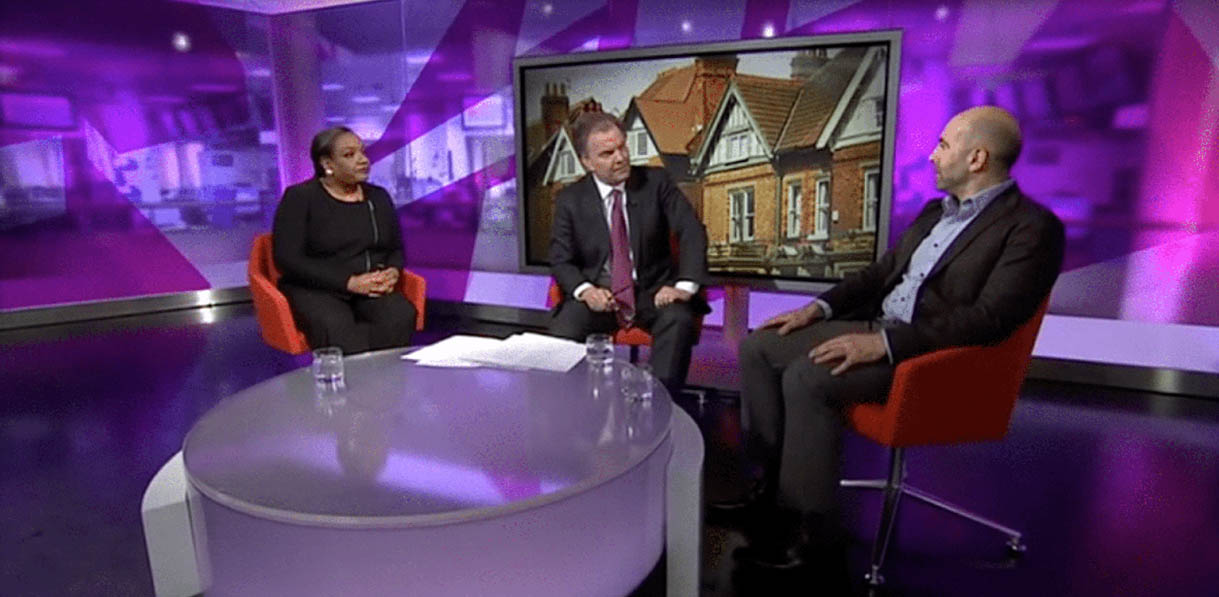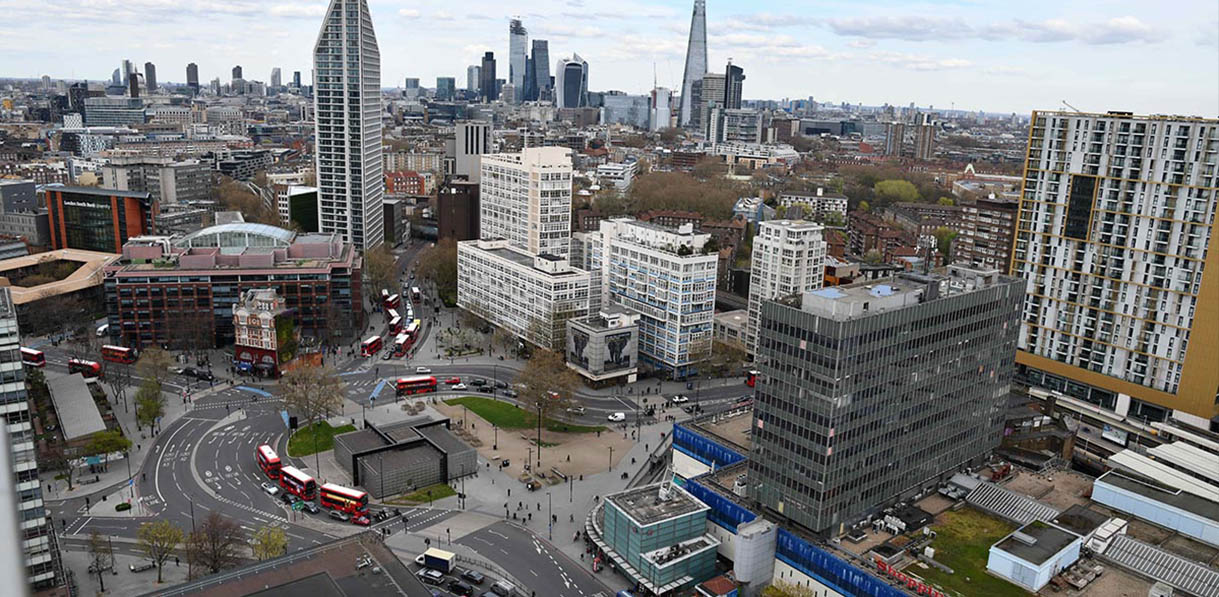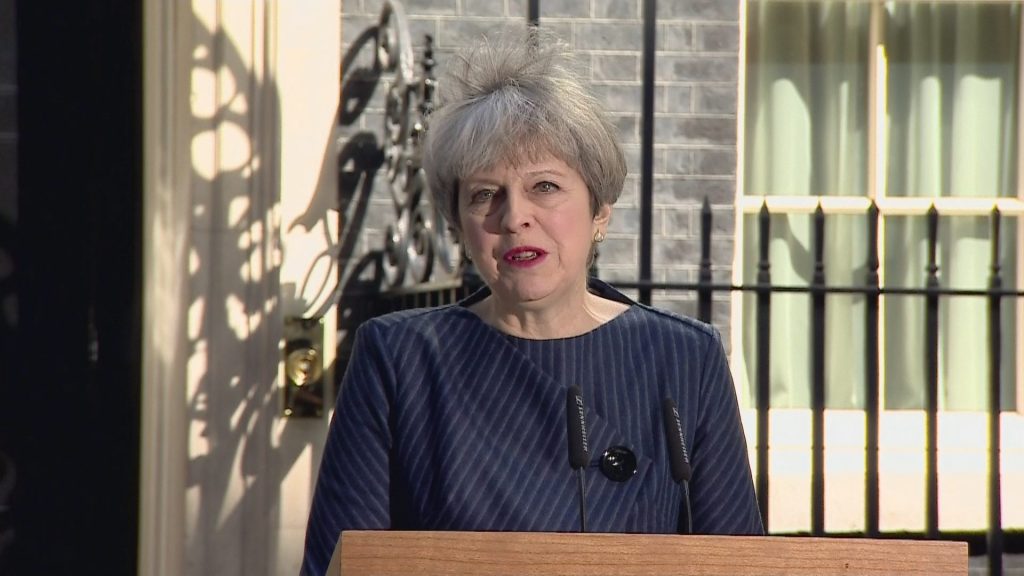Theresa May’s snap election has knocked housing well and truly off the news agenda for the time being and I am now fascinated by the politics of what lies ahead. Firstly the question of why she called the election. I thought it was astonishing that she claimed that there was too much opposition in the House of Commons and the House of Lords to her vision of Brexit, when debate is Parliament’s raison d’etre and she had won recent Brexit votes comfortably. With the Tories at 48% against Labour’s 25% in the opinion polls, this is the perfect moment for her to grab an increased majority and that was clearly the real reason. She was also no doubt keen not to repeat Gordon Brown’s miscalculation in 2007 when he did not call a snap election even though he was enjoying an opinion poll honeymoon, only to wait until 2010 and then lose.
From a Brexit management perspective it also looks like a good decision. A new parliament will give her 5 years to negotiate the exit from the EU and ensuing trade negotiations. If she hadn’t called an election, she would have faced a UK election just as the exit negotiations were concluding. I agree with Tory strategists that entering into a new 5 year parliament in June 2017 will give her a stronger negotiating hand. My concern is that she will interpret an election victory as a blank cheque. The EU referendum was a simple Remain or Leave question with no nuance regarding the single market, freedom of movement or the customs union. Mrs May makes the convenient assumption that Leave voters wanted a so called hard Brexit where the UK would give up all three. I agree with Tony Blair’s argument today on Radio 4 that we could stay in the single market and renegotiate the freedom of movement to something more manageable and palatable to both Remain and Leave voters. That would help bring the country back together (remember 48% of people didn’t vote Leave) and also ensure the supply of labour the UK needs to maintain the dynamism of its economy. I suspect we will hear very few specifics from the Tory campaign about Brexit, so May can keep her mandate as wide open as possible.
Now the question of outcomes. I think another good reason to call an election now is to resolve the issue of a second Scottish referendum. The Tories are gambling on the likelihood that we have seen peak SNP in Scotland and indeed opinion polls seem to suggest this. A poll for The Sunday Times today shows the SNP 6 points down on its 2015 Westminster result at 44% and the Tories up 18 points at 33%. Labour party support has collapsed to 13%, down 11%. On this basis the Tories could go from 1 to 12 seats in Scotland, extinguishing Nicola Sturgeon’s mandate for a referendum for the next five years. By then, the SNP will have faced elections for the Scottish parliament and could lose their majority, preventing them from gaining a majority vote for a future referendum in the foreseeable future. Tories expect to gain from Leave voters, Scots who don’t want a referendum and the popularity of Scottish leader, Ruth Davidson. Opinion polls show that 45% of Scots would vote for independence and 48% want a referendum.
The next question is what will happen to the Labour party? Unless there is some major political earthquake in the next few weeks, a Tory majority looks very likely. I think the Labour party will lose around 50 seats. The fact that it won’t lose many more is because its support was already cut to the bone in 2015 under Ed Miliband and many of its remaining seats are in Labour heartlands. I was astonished to hear Jeremy Corbyn’s opening speech in the campaign: a kind of proletariat versus the powerful rhetoric that will appeal mainly to his North London socialist clique and Momentum. I could see its core vote across Great Britain rolling their eyes and wondering who the hell to vote for this time.
Labour’s wipeout in Scotland is also likely to entrench. Left voters there have found salvage in the SNP and some will return to the Lib Dems. Seats in London and heartlands of the North, Midlands and Wales look safe, though it is uncertain how all those Labour voters who voted Leave will vote. This will certainly put pressure on marginal seats where those individuals may well turn into shy Tory voters, that amorphous grouping that helped put Cameron into No 10 in 2015.
The biggest hope for Labour is that this election will put the Corbyn catastrophe to rest without the loss of too many seats. Surely Corbyn cannot possibly stay on after losing the election? I’ve heard political commentators say that he will not go until he can be sure that a left wing candidate will succeed him. Certainly the John McDonnell and Len McCluskeys of this world will circle around his political cadaver to try and ensure this is the case. A lot depends on the Parliamentary Labour party that gets elected on June 8th. There are a number of Labour seats looking for new candidates: I wonder if we will see David Milliband selected – perhaps in Alan Johnson’s old seat. That would provide some fascinating drama and interesting prospects for the future of the party. Unfortunately many Labour constituency parties have been taken over by the hard left so his selection would be difficult. Just who will emerge as the new leader will be fascinating. Could Corbyn’s north London pals get on to the ballot paper: Diane Abbot, Emily Thornberry or Keir Starmer? Will Chuka Umunna stand again? I think somebody like Keir Starmer or Lisa Nandy are most likely to be able to hold the party together and either could well be the next leader. I am confident either of them could take the Labour party back to the land of the living and I look forward to a period of revival. The UK economy is likely to take a turn for the worse in the next 2-3 years and there will be opportunities for a sensible left opposition to gain ground. This is of course another reason why Theresa May has called an election now, before the economy takes a nose dive.
Will the Labour party attempt to change the arrangement for membership and how the leader is elected? Some fear that Corbyn will stay on long enough to change the rules to ensure the Parliamentary Labour Party (PLP) elects a candidate from the left. 35 nominations were needed in the current parliament to get a leadership candidate on the ballot paper – that’s 15% of the 232 Labour party MPs elected in 2015. If 180 Labour MPs are elected then only 27 nominations will be needed. There could be another far left candidate on the ballot who will get elected by the wider membership. I think it is crucial that the rule brought in by Ed Milliband to allow anybody to vote for a small fee (£3 in 2015) is abolished as it clearly opened a back door for the extreme left. But it’s hard to see how that will change if the leadership of the party is still in the hands of the left wing. Neil Kinnock saved the party from oblivion in the 1980s, I hope somebody will emerge who can do the same now. I don’t want the Labour party to be hammered at the polls, but conversely a hammering might be what’s needed to knock enough sense into it. Jeremy Corbyn’s selfish clinging on to power at any cost has had a huge cost to democracy in the UK and created the prospect of eternal Tory government. I hope Neil Kinnock will see a Labour government with broad appeal before he leaves this mortal coil.
Will the Liberal Democrats gain ground in this election? I think Tim Farron is a caretaker leader, elected out of the ashes of the 2015 post coalition decimation of the party. Positioning the party as the voice of Remainers who don’t want a hard Brexit is a sensible strategy that could revive the party’s fortunes and provide a better leader. The strategy also gives moderate left voters somewhere to go. But getting Lib Dems elected is a question of tactical voting. There is no way that voting Lib Dem in my constituency of Hackney South for example will unseat Labour MP Meg Hillier as she has a huge majority. (I don’t particularly want to unseat her either). I imagine many Labour voters will vote tactically in favour of a particular MP even if they don’t think Corbyn is the right leader. A Lib Dem revival depends on the Lib Dems reviving their core vote in North & Borders Scotland, South West England, South West London and those semi urban strongholds like Cheltenham and Eastleigh. I do think we will see 20 or so Lib Dem MPs in the next parliament, a respectable increase from the current 8.
In the meantime, I think we have a Tory government with a majority of over 100 to look forward to for the next 5 years. We really will be back to the 1980s, again with a woman leader and all those Thatcher analogies. We know very little about what might be ahead in terms of housing policy. I see no reason to expect the Tory party to warm to the cause of landlords, I think Theresa May is more likely to favour homeownership as Thatcher did. It was Thatcher who deregulated private sector tenancy agreements in 1989, if anything May is likely to go in the opposite direction and introduce compulsory three year agreements. The key issue for the private rented sector is what will happen to supply and demand. Now that 19% of the UK’s housing is privately rented, If tax changes cause landlords to sell up, then we could see a shortage of properties to rent. But if Brexit causes a reduction in immigration, there could be fewer people renting anyway.
The housing market is starting to stagnate. An agent in Lewisham told me this week that this is the first time in his 30 years in business he has known both lettings and sales markets grind to a halt at the same time. If rising inflation and a rising pound add to the UK’s economic woes in 2018, the next government may be prompted into stimulating the housing market. Whether that will mean easing some of the levers that have slammed the breaks on buy to let – namely Bank of England regulation and tax on turnover – remains be seen. Continuing austerity is likely to lead to more licensing schemes as local authorities try to fund their private sector housing departments.
In its 2015 Manifesto, the Tories said very little about the private rented sector. Expect the same again giving them maximum flexibility to do what they want. I think we are likely to see the Labour manifesto advocate increased council house building and broadly cut and paste private rented sector policy from Shelter again. So expect a call for mandatory 3 year tenancy agreements and indexation of rent increases once the contract begins. The Labour manifesto is also likely to encourage licensing and possibly call for a national licensing scheme akin to the Welsh model. Corbyn favours rent caps to reduce the housing benefit bill – whether such an extreme policy would make it into the party’s election manifesto is questionable. There is a danger that the Tories will feel compelled to respond to these ideas and come up with some more extreme policies themselves. Remember they pulled Housing Association Right To Buy out of the hat in the 2015 campaign as a vote winner – although this still hasn’t been implemented. The current Housing & Planning Minister Gavin Barwell has a slim majority in Croydon but will be hoping to maintain his seat. I suspect he will be moved in a reshuffle and we will be assigned what will be the 15th housing minister in the past 20 years.









